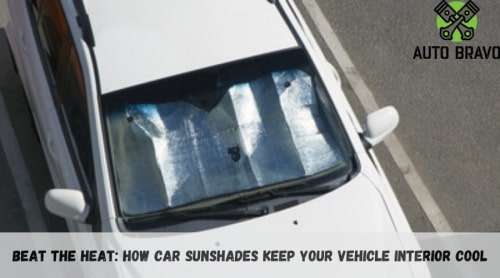
Nov 27,2024
Welcome to the article on how car sunshades can help keep your vehicle interior cool. The scorching heat of the sun can make your vehicle heat up as an oven. With the help of right sunshade, you can beat the heat and protect your car's interior.
Car sunshades are essential in maintaining a cool interior. They provide protection against harmful UV rays that can damage your car's upholstery and dashboard. Additionally, they help in reducing the temperature inside the car, making it more comfortable for passengers. Moreover, car sunshades can preserve the lifespan of your car's electronics, such as the stereo system and navigation.
Car sunshades work by employing reflective materials that block sunlight and heat from entering the car. These materials have insulation properties that prevent heat transfer into the car's interior. This efficient design not only helps in keeping the temperature down but also ensures easy installation and removal for convenience.
· Protection against harmful UV rays that can damage your car's upholstery and dashboard.
· Reducing the temperature inside the car, making it more comfortable for passengers.
· Preserving the lifespan of your car's electronics, such as the stereo system and navigation.
· Reflective materials that block sunlight and heat from entering the car.
· Insulation properties that prevent heat transfer into the car's interior.
· Easy installation and removal for convenience.
· Foldable shades that can be stored compactly when not in use.
· Custom-fit sunshades that perfectly match your car's windshield shape.
· Rear window shades for added protection and privacy.
· Side window shades to shield passengers from direct sunlight.
· Lowering the temperature inside the car, reducing the need for excessive air conditioning.
· Protecting your car's interior from fading and cracking due to sun exposure.
· Enhancing privacy and security by limiting visibility into the car.
· Preserving the value of your vehicle by keeping it in good condition.
· Measure your windshield to ensure a proper fit.
· Consider the material's quality and durability.
· Opt for sunshades with UV protection for added benefits.
· Read customer reviews and recommendations.
Installing car sunshades is a simple process. Start by unfolding the sunshade and position it against the windshield. Make sure the sunshade covers the entire windshield surface, leaving no gaps. Tuck the edges securely to prevent any sunlight from seeping through. When not in use, store the sunshade properly to maintain its longevity.
To keep your car sunshades in good condition, regular maintenance is necessary. Utilize a moist material or wipe to clear away soil and garbage off of the outer layer of the overhang. Avoid using harsh chemicals that may damage the sunshade material. After cleaning, let the sunshade air dry completely before folding and storing it.
Car sunshades are a practical and effective solution to beat the heat and protect your vehicle's interior. By investing in a high-quality sunshade, you can enjoy a cooler and more comfortable driving experience while safeguarding your car's upholstery, dashboard, and electronics from sun damage.
Q: Can I use a car sunshade for my rear window?
A: Yes, there are specific sunshades available for rear windows, providing additional protection and privacy.
Q: Are car sunshades easy to install?
A: Yes, most car sunshades are designed for easy installation and can be quickly put in place or removed when needed.
Q: Do car sunshades work on all types of vehicles?
A: Car sunshades come in various sizes and shapes to fit different types of vehicles.
Q: Can car sunshades prevent my car's interior from fading?
A: Yes, car sunshades are designed to block harmful UV rays, which can cause fading and damage to your car's interior.
Q: Can I use car sunshades on a sunny but cold day?
A: Absolutely! Car sunshades not only block heat but also protect your car's interior from UV rays, regardless of the outside temperature.